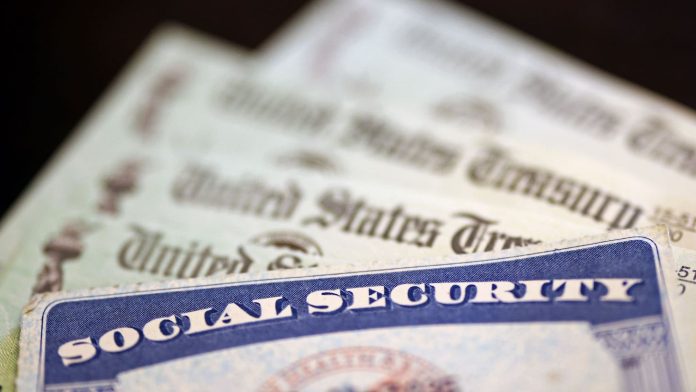On Wednesday next week, the Social Security Administration (SSA) is to issue benefits checks to millions of people across the U.S., in the next payment run on the agency’s distribution schedule for November.
Who’s receiving a Social Security check on Wednesday, Nov. 19?
Checks are to be disbursed to certain recipients of retirement benefits, Social Security Disability Insurance (SSDI) or survivor pay.
Of the 70 million people who get retirement, SSDI or survivor benefits in the U.S., most are paid their money on the second, third or fourth Wednesday in each month.
A recipient’s designated Wednesday is determined by the date of birth of the worker whose Social Security taxes have accumulated the benefits entitlement.
Next Wednesday’s payments cover birthdays between the 11th and 20th of each month. This follows last Wednesday’s payment run (November 12), which applied to birthdays between the first and 10th of each month.
At a glance – Nov. 2025’s Wednesday payment schedule:
- Born on 1st-10th of month: Weds., Nov. 12
- Born on 11th-20th of month: Weds., Nov. 19
- Born on 21st-31st of month: Weds., Nov. 26
Who isn’t paid benefits on a Wednesday in Nov.?
- Some long-term Social Security beneficiaries
If you began receiving retirement, SSDI or survivor benefits before May 1997, your check typically goes out on the third day of each month, irrespective of your date of birth.
These long-term beneficiaries were therefore scheduled to be paid their November money on Monday, November 3.
Beneficiaries of the Supplemental Security Income (SSI) scheme – a separate SSA program for low-income individuals who are over 65 or have a disability – are normally paid on the first day of each month.
However, as November began on a Saturday, this month’s SSI payments were issued to their nearly 7.5 million recipients a day early: on Friday, October 31.
- Dual beneficiaries (SSI + regular Social Security)
Just over 2.5 million Americans claim both SSI and one of the SSA’s retirement, SSDI or survivor benefits.
These recipients were due to get the former on October 31, followed by the latter on November 3.
At a glance: non-Wednesday beneficiaries in Nov.:
- SSI recipients: Fri., Oct. 31
- Pre-May ’97 Social Sec. beneficiaries: Mon., Nov. 3
- Dual recipients: SSI on Oct. 31; Social Sec. on Nov. 3
You can check out the agency’s full benefits-distribution schedule for 2025 in this online calendar.
Social Security payments continued during shutdown
The U.S.’s record-breaking government shutdown finally ended this week – but the 43-day-long stoppage did not prevent Social Security payments from going out during October and the first 12 days of November.
On October 1, the day the shutdown began, the SSA had reassured recipients that the distribution of benefits would continue “with no change in payment dates”.
Payments remained uninterrupted because the SSA receives mandatory funding through the Social Security Act.
How much do recipients of Social Security retirement get paid?
Retired workers – who make up the majority of the U.S.’s Social Security beneficiaries – receive $2,008.31 per month on average, the SSA says. The maximum monthly retirement check in 2025 is $5,108.
How much money is paid to disability, survivor and SSI recipients?
Disabled workers get $1,582.95 a month on average, while recipients of survivor benefits are paid an average of $1,575.30 per month. Beneficiaries of the SSI program receive $717.84 a month on average.
Social Security to raise benefits
In October, the SSA confirmed that its beneficiaries will get a 2.8% rise in their monthly payments from January 2026, as part of the agency’s annual cost-of-living adjustment (COLA).
For recipients of Social Security retirement benefits, this will mean an average monthly hike of $56, the SSA says.
How does the SSA send out benefits?
Almost all benefits checks are now paid electronically, as the SSA goes fully paperless. As of September 30, the agency says beneficiaries are “in most cases” no longer being given the option of receiving a paper check in the mail.
The SSA gives its beneficiaries two ways of receiving electronic payments:
Beneficiaries can get their money by direct deposit, by providing the agency with their bank details. You can supply this information on the “my Social Security” online portal.
Recipients can also have their benefits paid onto the Direct Express Card, a special debit card for federal payments made to people who do not have a bank account.
Related stories
Get your game on! Whether you’re into NFL touchdowns, NBA buzzer-beaters, world-class soccer goals, or MLB home runs, our app has it all.
Dive into live coverage, expert insights, breaking news, exclusive videos, and more – plus, stay updated on the latest in current affairs and entertainment. Download now for all-access coverage, right at your fingertips – anytime, anywhere.









